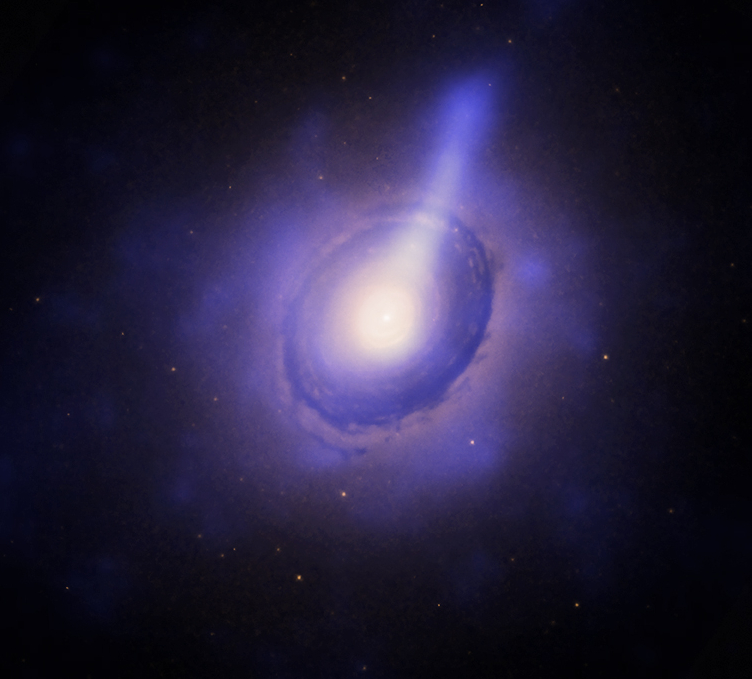
 Credit: X-ray: NASA/CXC/Univ. of Bristol/M.Hardcastle et al; Optical: NASA/STScI
Credit: X-ray: NASA/CXC/Univ. of Bristol/M.Hardcastle et al; Optical: NASA/STScI
Jet Speed
Enormous jets of particles and radiation often seen emanating from external galaxies point to a deep dark astrophysical secret: the presence of a supermassive, actively feeding black hole lurking near the galactic center. Such supermassive black holes contain the mass equivalent of millions, or billions, of suns packed into a space no larger in radius than the orbit of Uranus. It's almost unbelievable to think that these tiny regions produce powerful partcle beams, sometimes driven for hundreds of thousand of light-years deep into intergalactic space. All this energy is believed to be the result of the accretion of galactic material by the black hole. How the black hole converts the ingest of matter to a strong, narrow outflowing particle beam is still not fully understood. Apparent mysteries abound, like the jets that seem to speed through space at velocities faster than light (understood now as some weird relativistic optical illusion). The radio galaxy NGC 383 shows a spectacular example of a kinky radio jet speeding away from the black hole at the center of the galaxy, and evidently changing velocity and direction as it hits material lying outside the galaxy. The image above shows an optical image of NGC 383, with a Chandra X-ray Telescope image (in blue) superimposed. The X-ray image shows energetic emission from the body of the galaxy itself, and clearly shows a jet-like structure of X-rays extending towards the top of the image. The X-ray emission from with this part of the jet provide unique clues about the nature of the jet at this critical juncture, where it appears to be changing most rapidly. This image was re-released as part of the Chandra Archives Collection in honor of American Archives Month.
Published: August 6, 2018
<
HEA Dictionary ● Archive
● Search HEAPOW
● Other Languages
● HEAPOW on Facebook
● Download all Images
● Education ● HEAD
>

Each week the HEASARC
brings you new, exciting and beautiful images from X-ray and Gamma ray
astronomy. Check back each week and be sure to check out the HEAPOW archive!
Page Author: Dr. Michael F. Corcoran
Last modified Monday, 26-Feb-2024 17:09:26 EST


